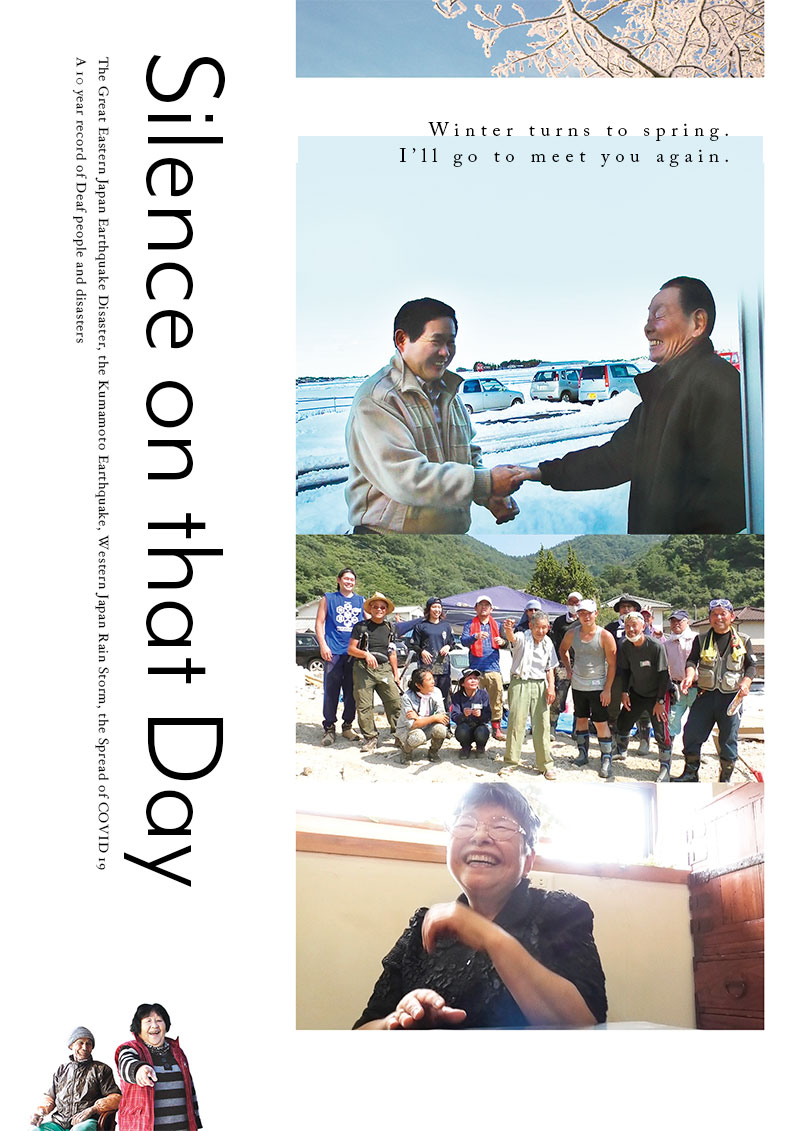Introduction


Many things were born from “that day”
Our “now” and our “from now on”
Our “now” and our “from now on”
What brought Director Ayako Imamura to visit Miyagi after the Great Eastern Japan Earthquake Disaster was the painful thought of “wanting to know more about the condition that Deaf people found themselves in.” It’s been 10 years since then…The enactment of the Sign Language Ordinance is progressing, there is a sign language interpreter at the governor’s press conferences, and there are sign language interpreters in some of the town and village offices and other public places.
All around Japan, in places where there have been various disasters and earthquakes, things that haven’t been seen before are now taking place. For example, there are now disaster shelters where people can use sign language to communicate, where writing and drawings are used to convey information, and where deaf and hard-of-hearing people have volunteered to help in disaster areas.
Film director Ayako Imamura, who in 2013 made the documentary film “The Connecting Bridge: Not hearing 3-11”, is now continuing to document the difficult conditions for deaf people in Miyagi, in Kumamoto after the earthquake, in western Japan after the heavy rains and flooding, and the spread of COVID 19. This is a record of the director Ayako Imamura’s focus on the relationship between deaf people and disasters.
All around Japan, in places where there have been various disasters and earthquakes, things that haven’t been seen before are now taking place. For example, there are now disaster shelters where people can use sign language to communicate, where writing and drawings are used to convey information, and where deaf and hard-of-hearing people have volunteered to help in disaster areas.
Film director Ayako Imamura, who in 2013 made the documentary film “The Connecting Bridge: Not hearing 3-11”, is now continuing to document the difficult conditions for deaf people in Miyagi, in Kumamoto after the earthquake, in western Japan after the heavy rains and flooding, and the spread of COVID 19. This is a record of the director Ayako Imamura’s focus on the relationship between deaf people and disasters.





